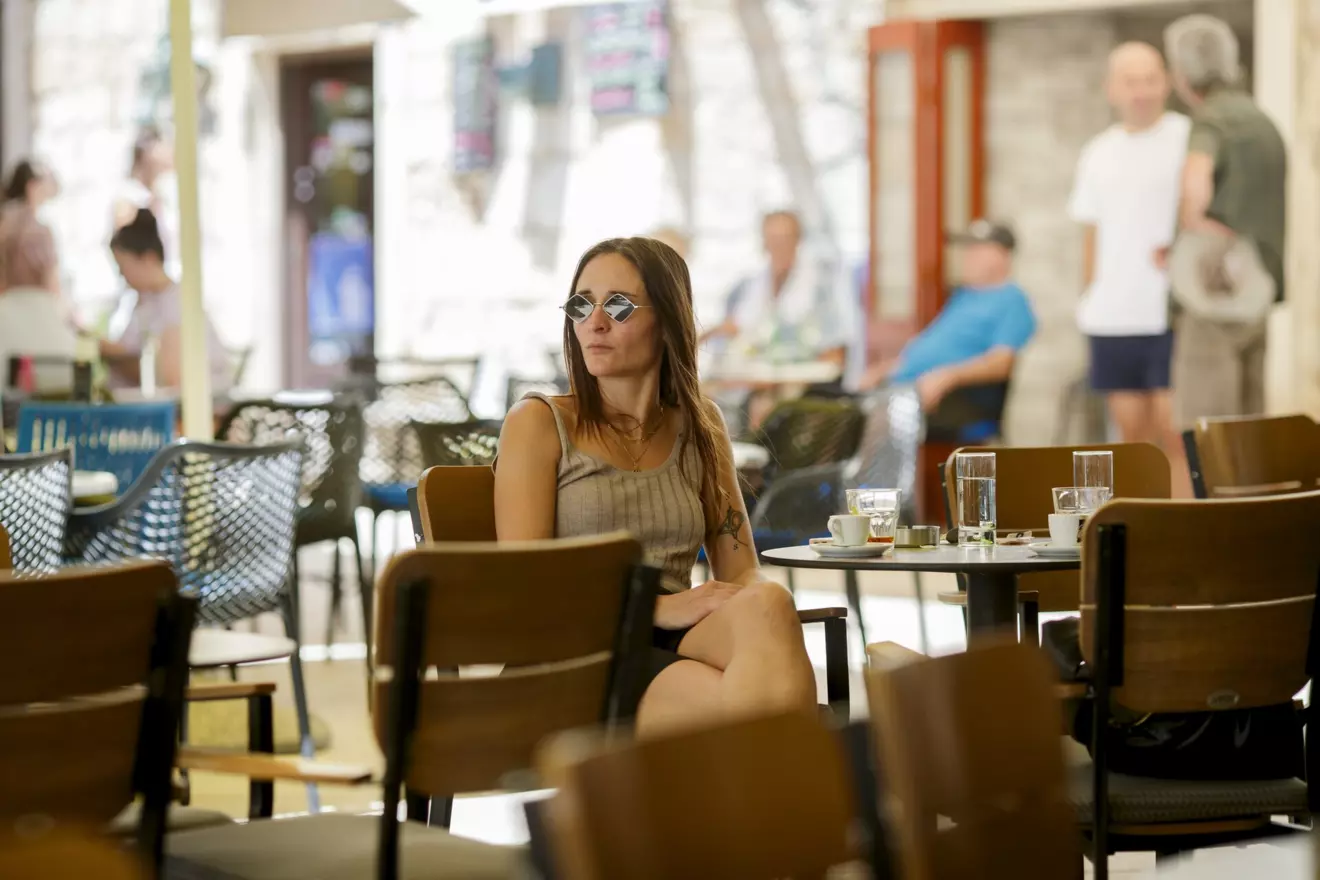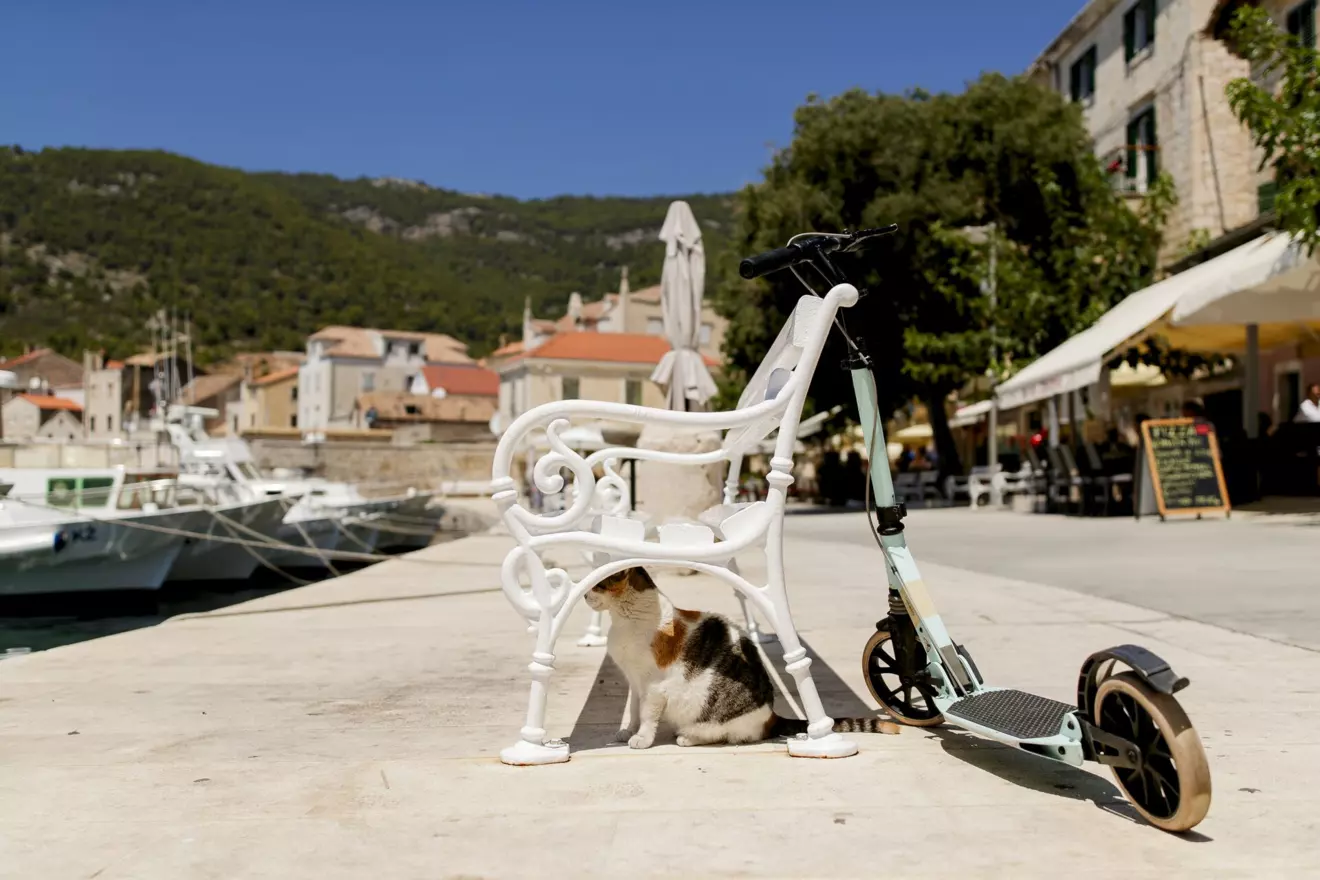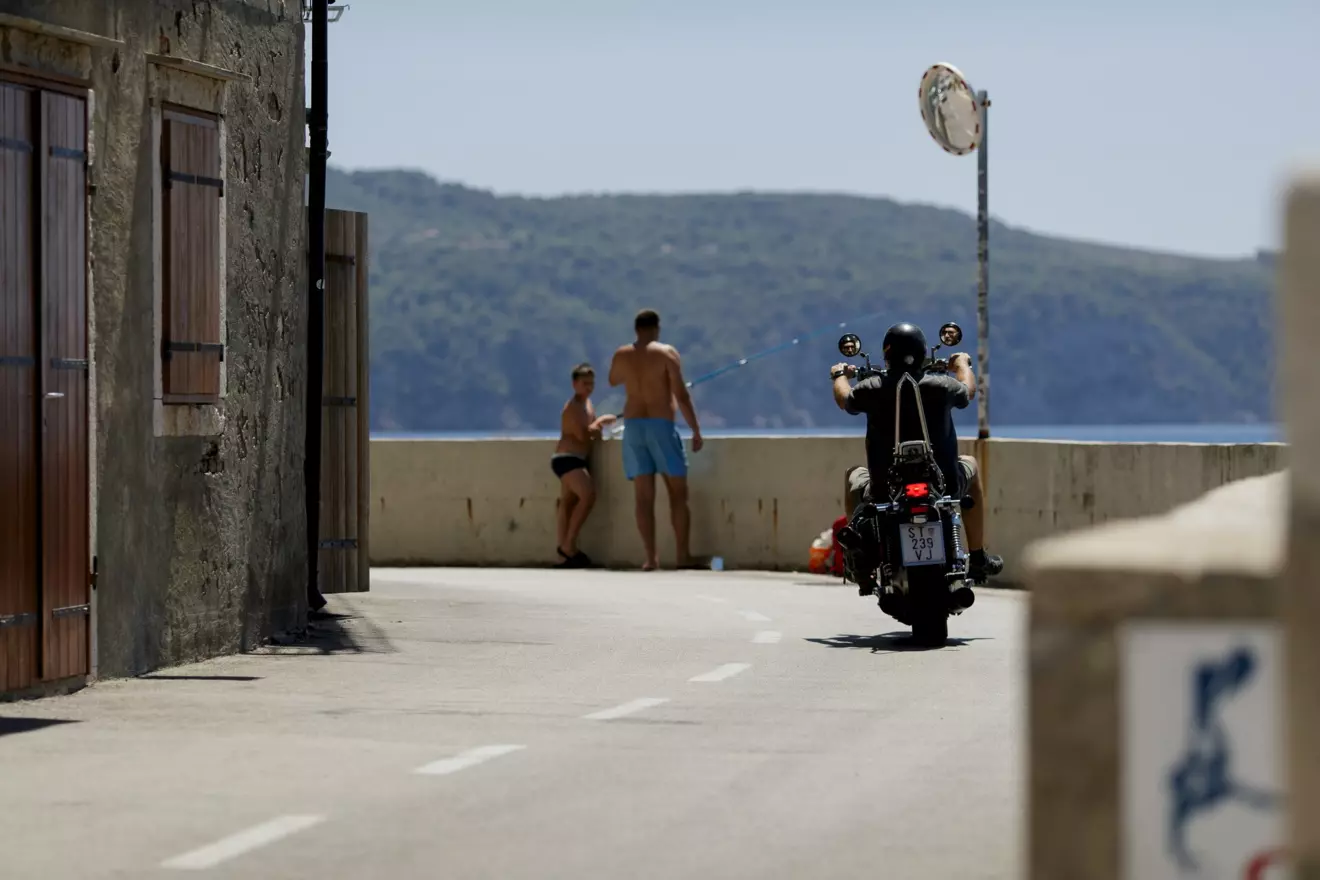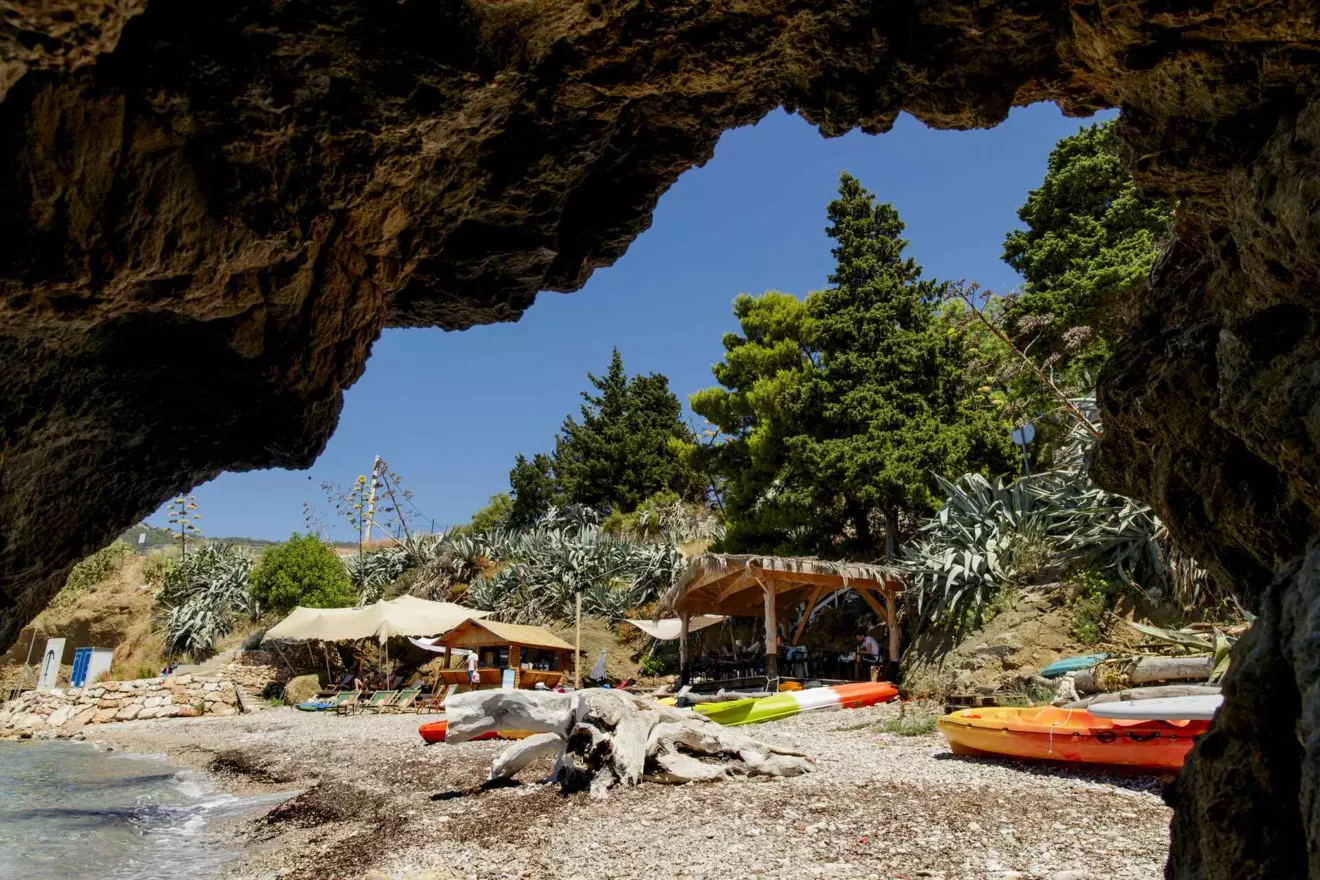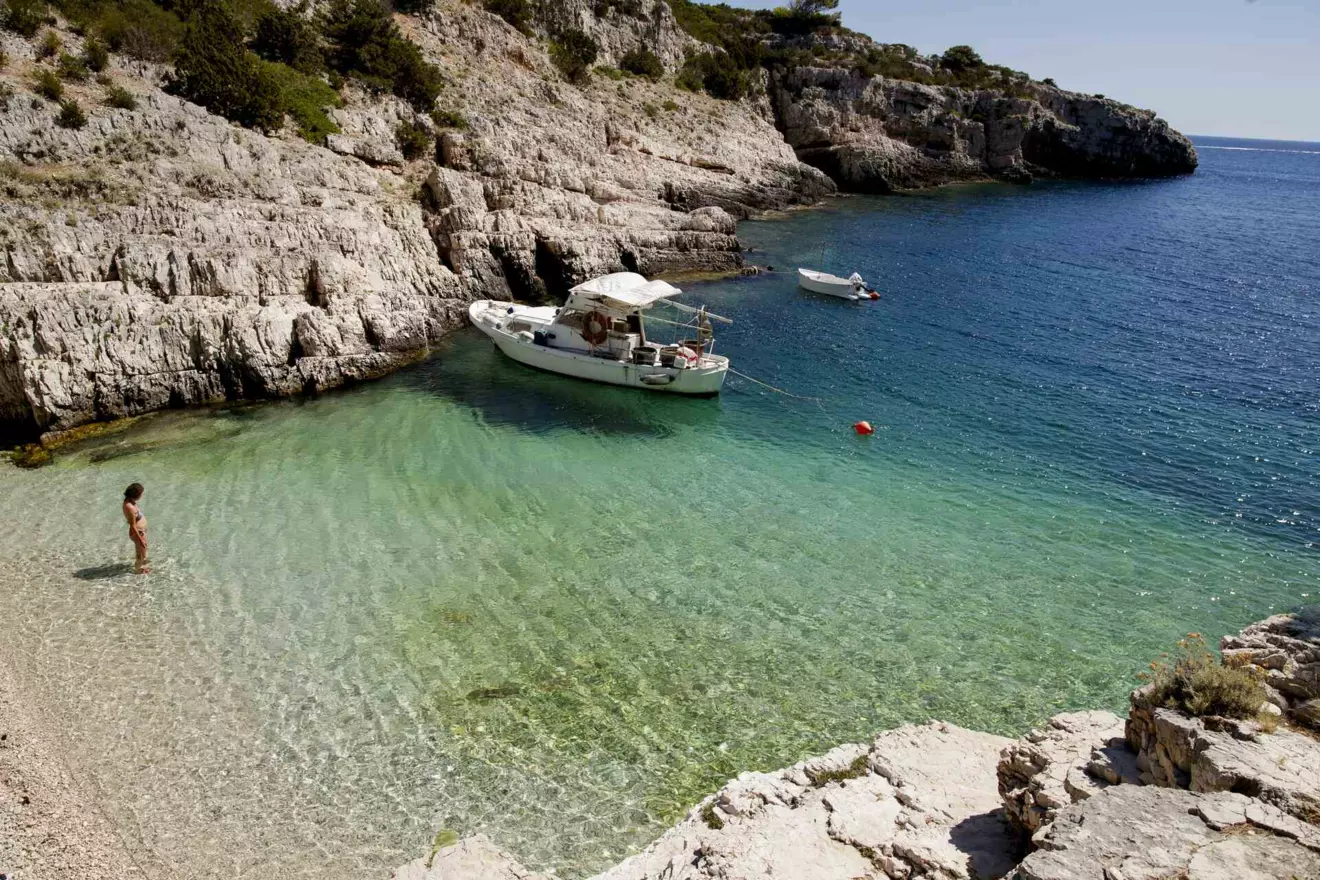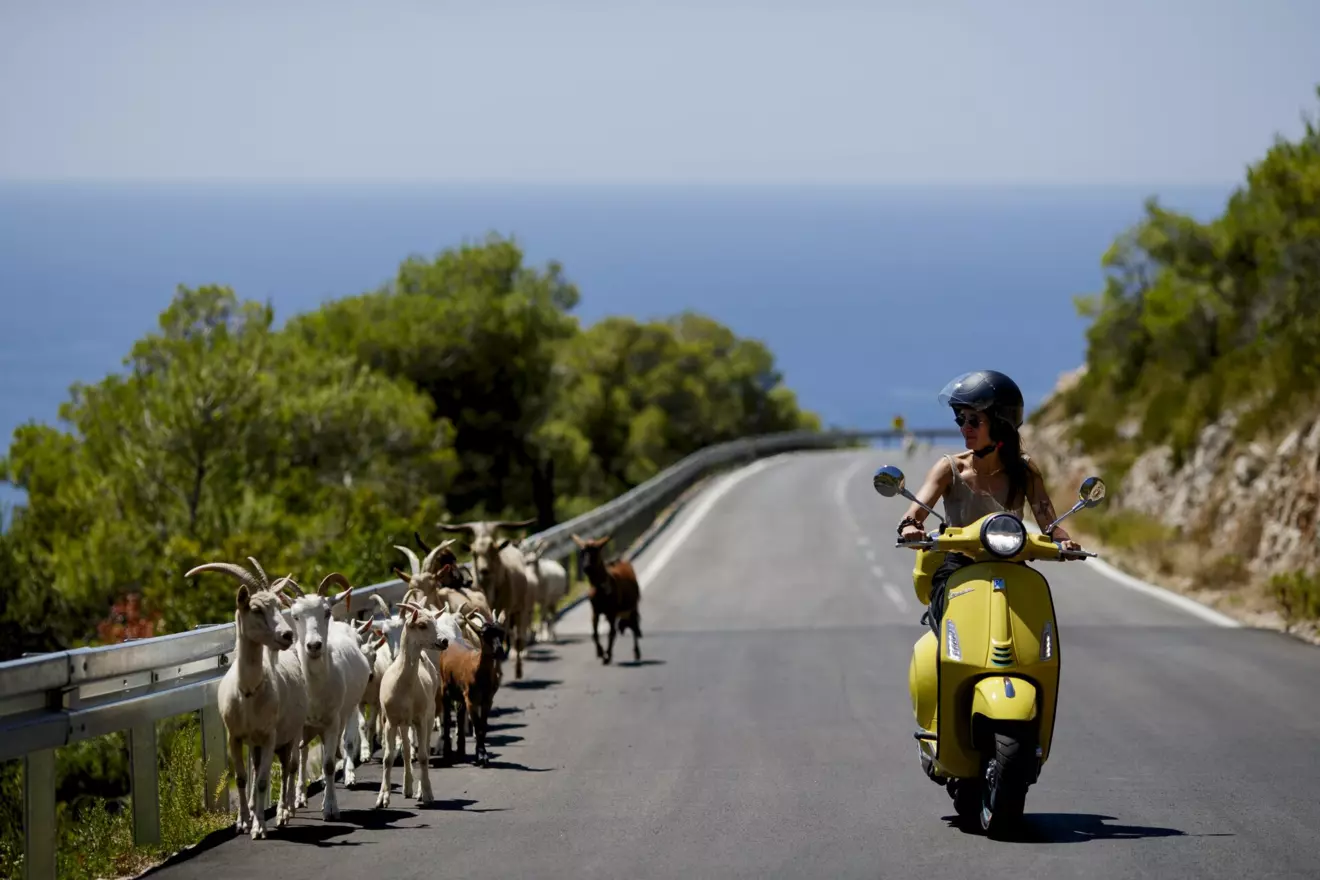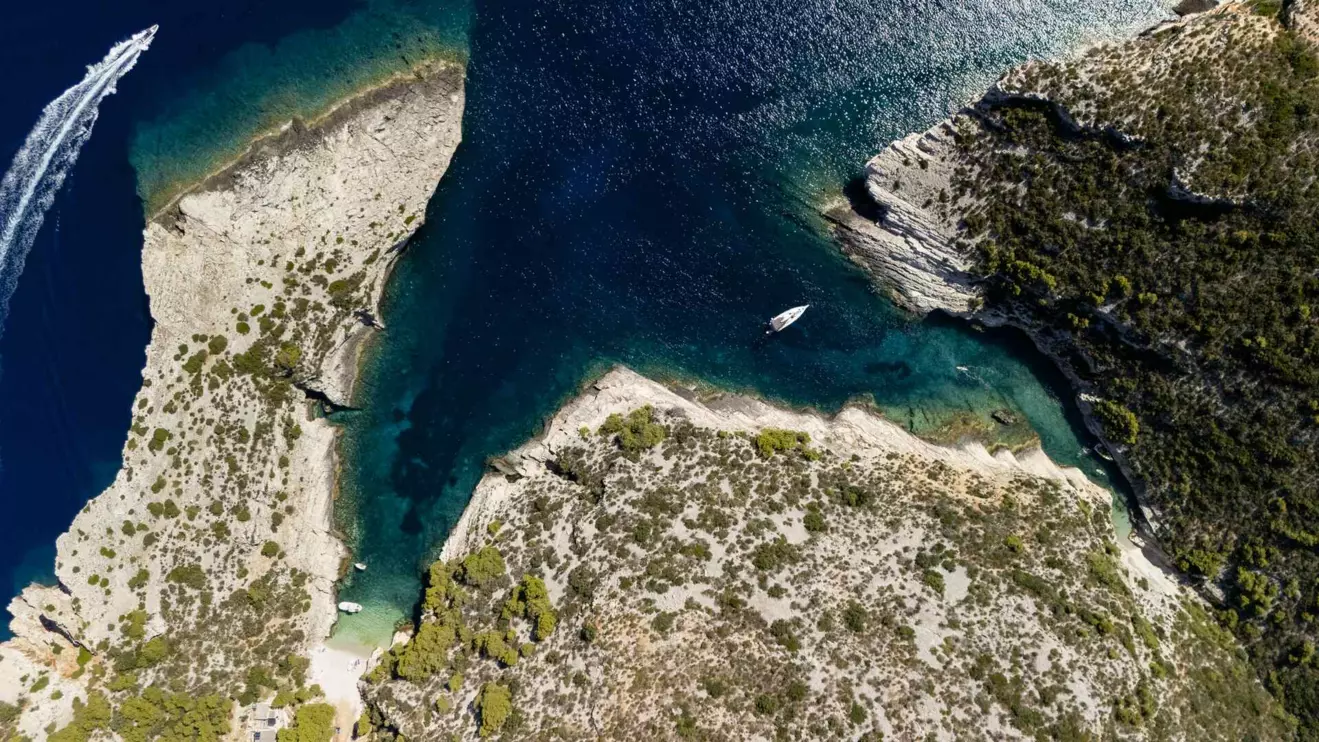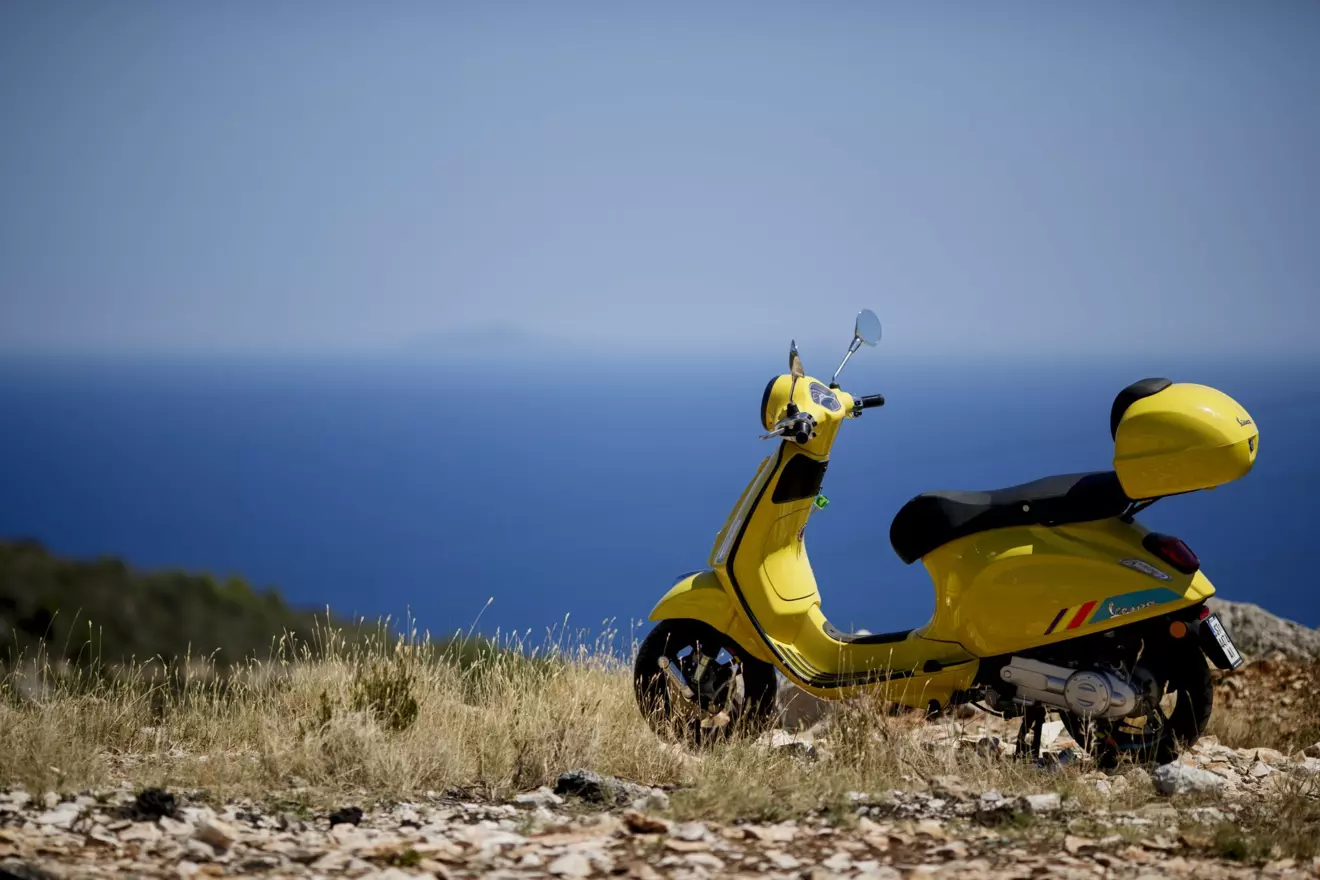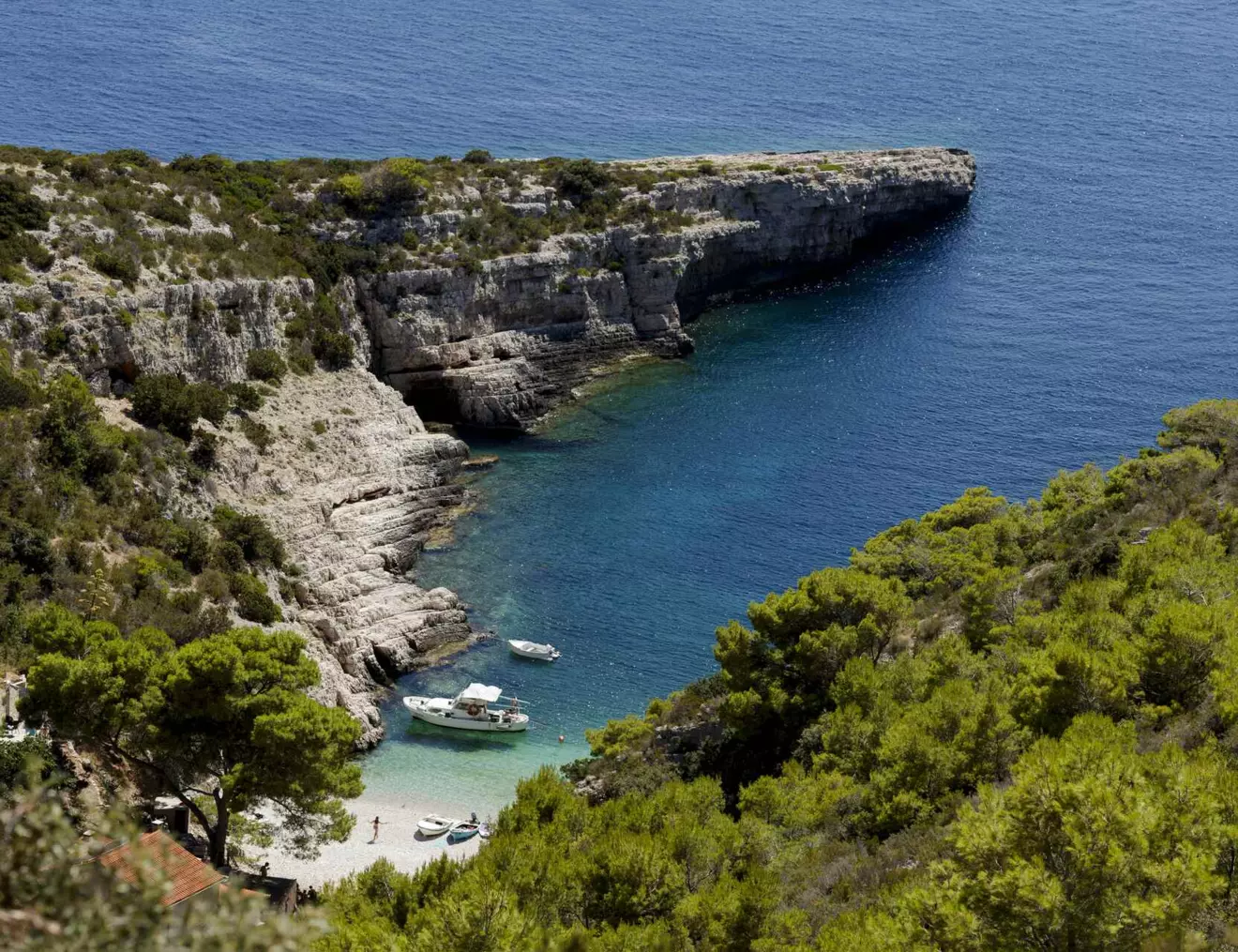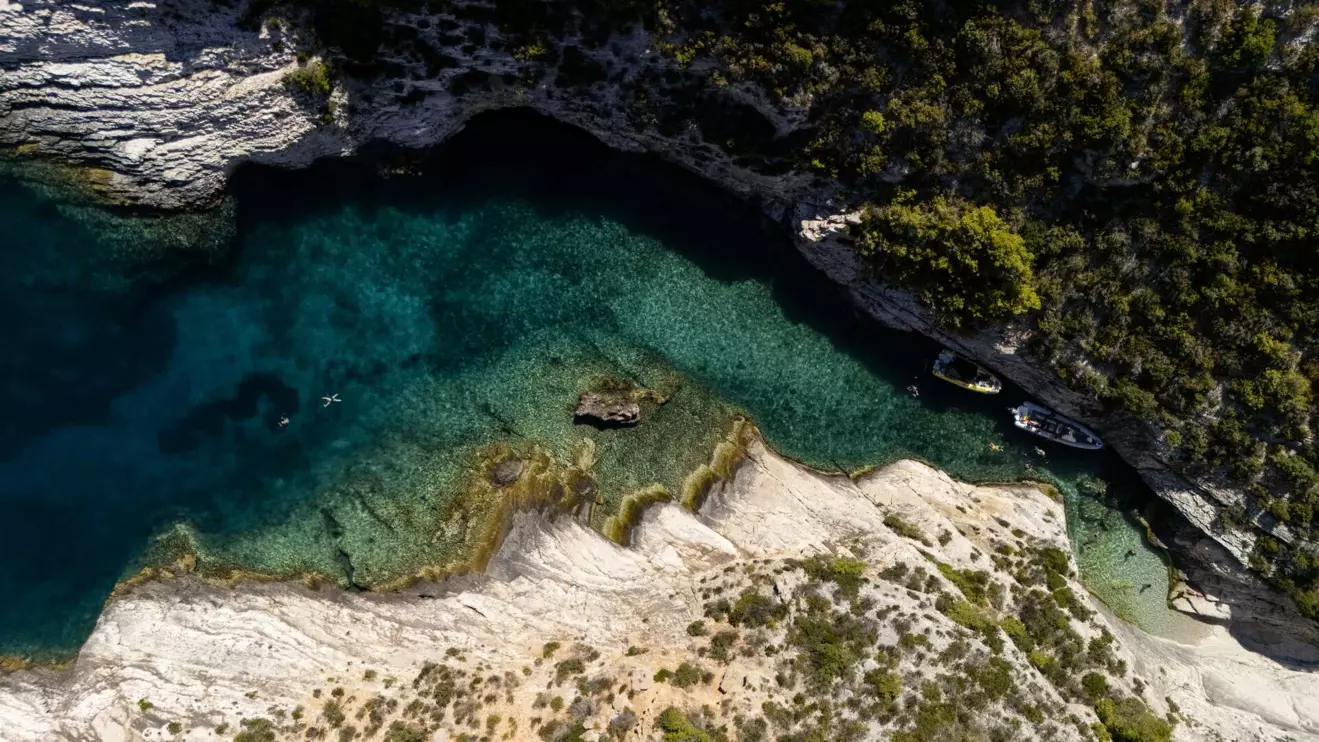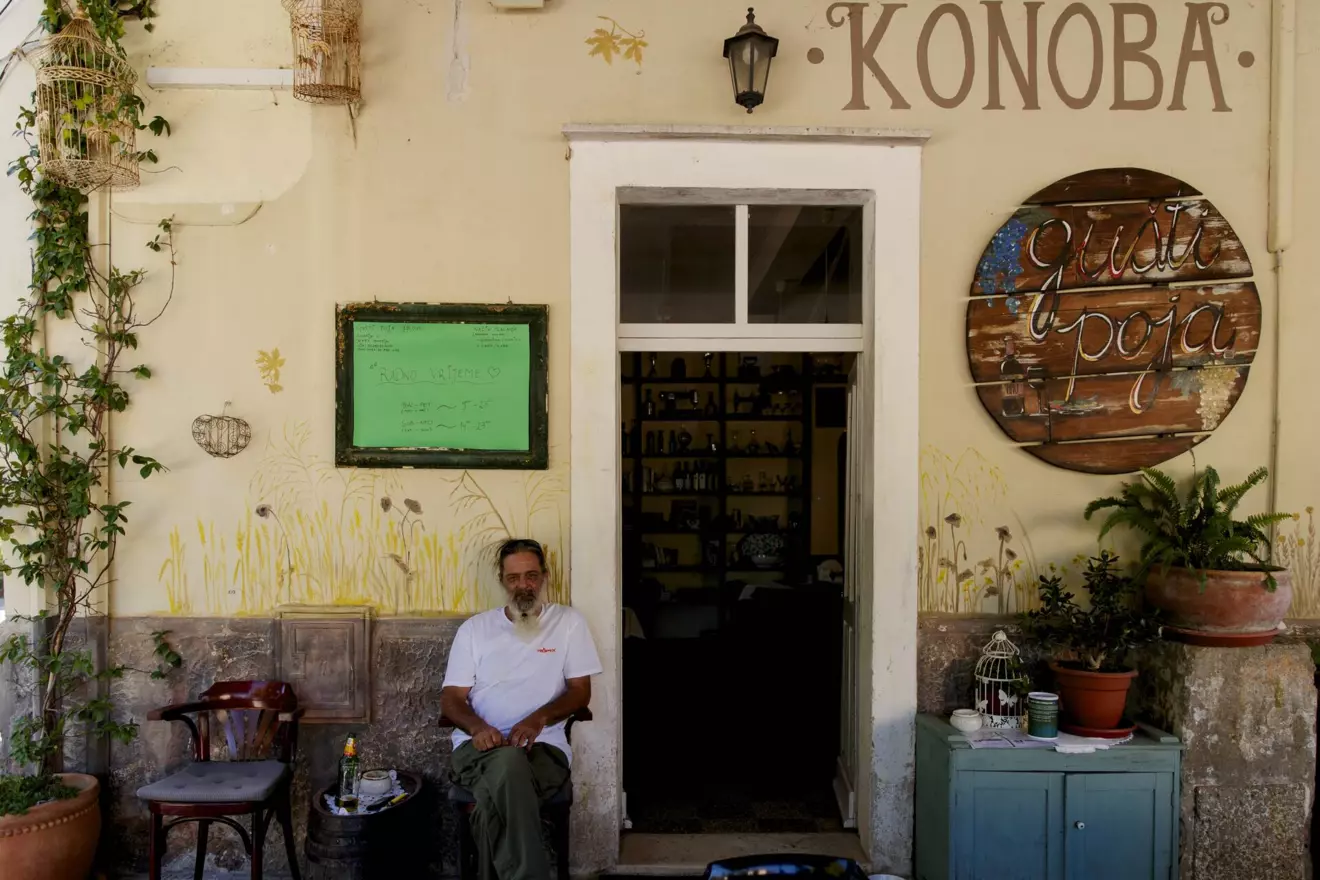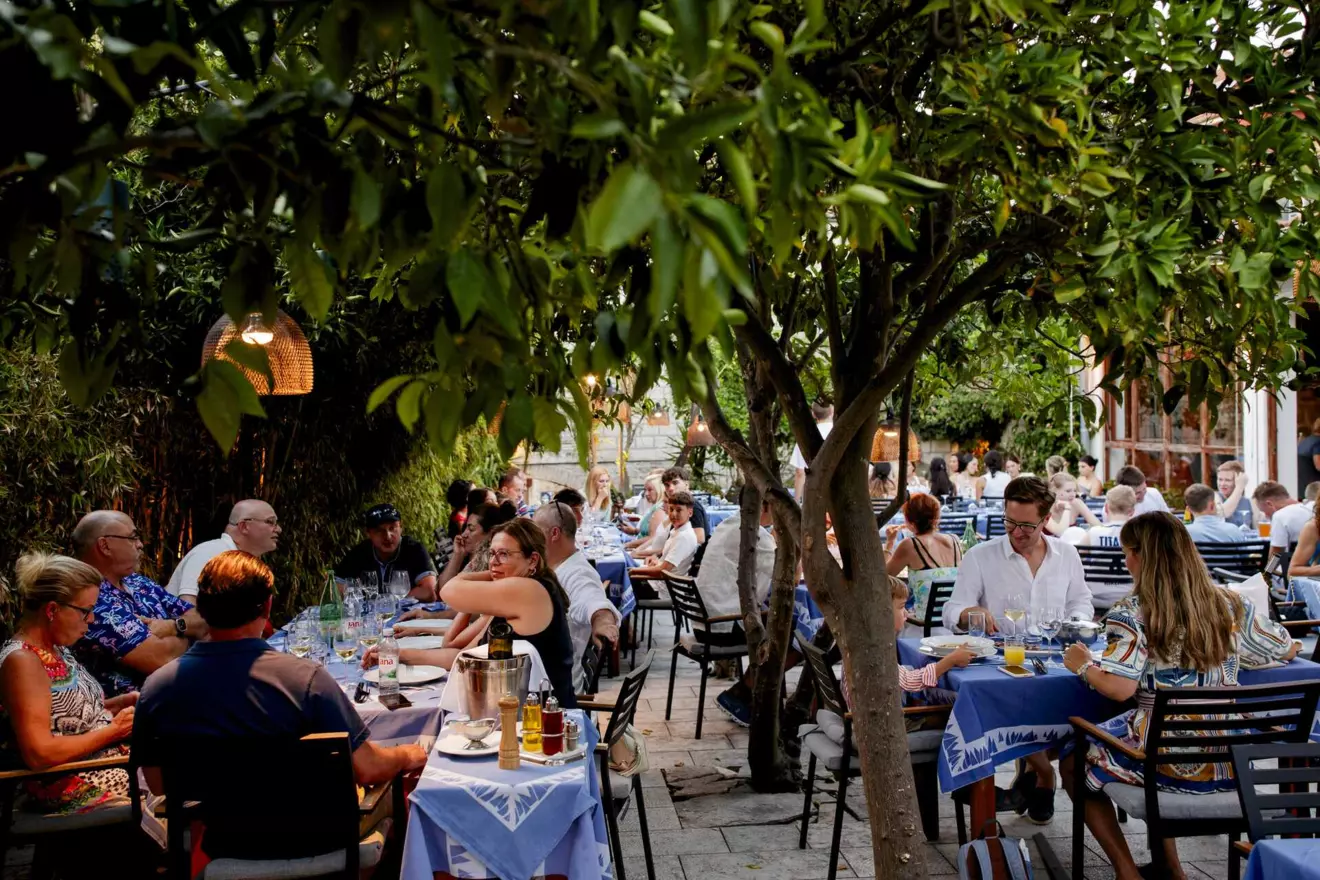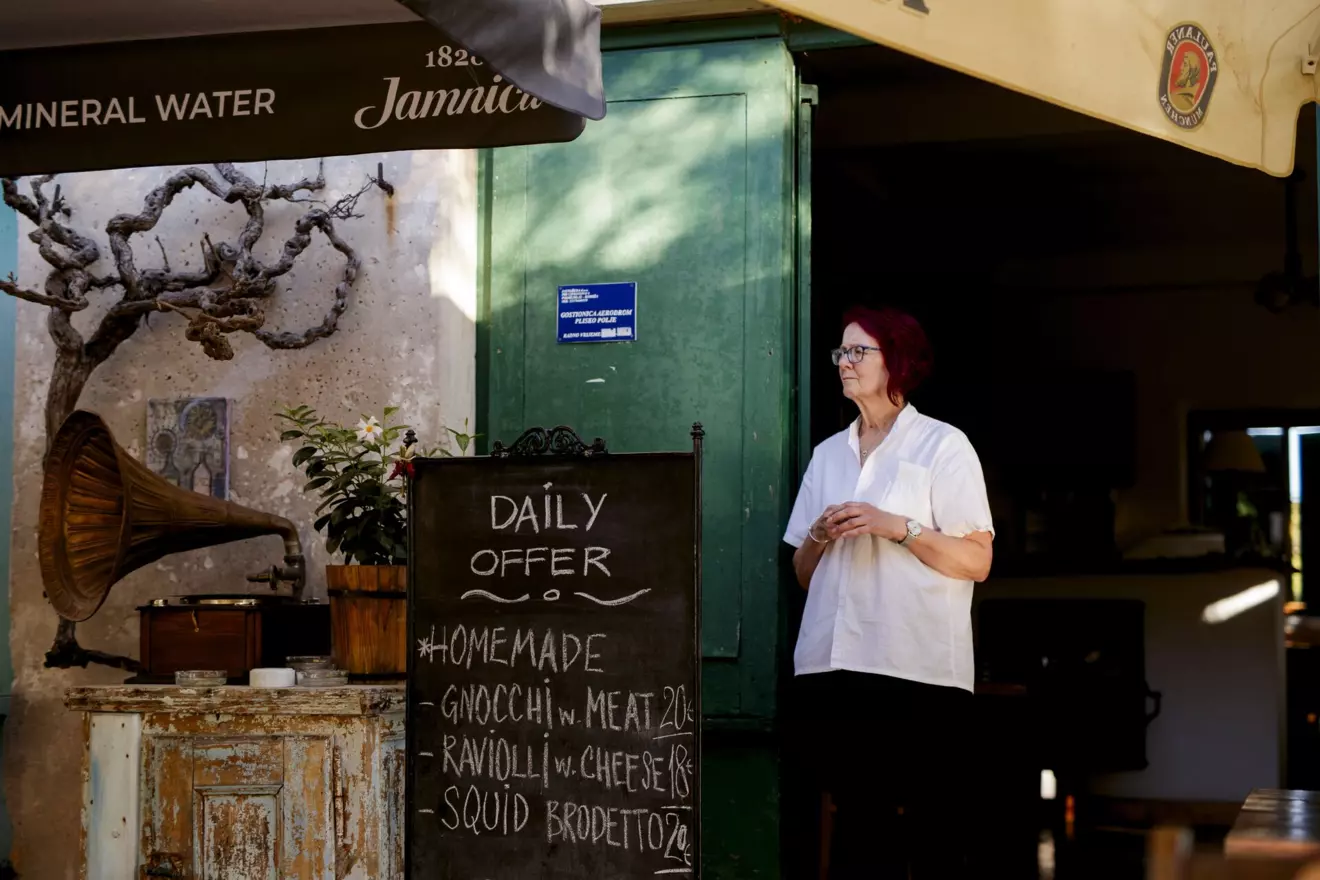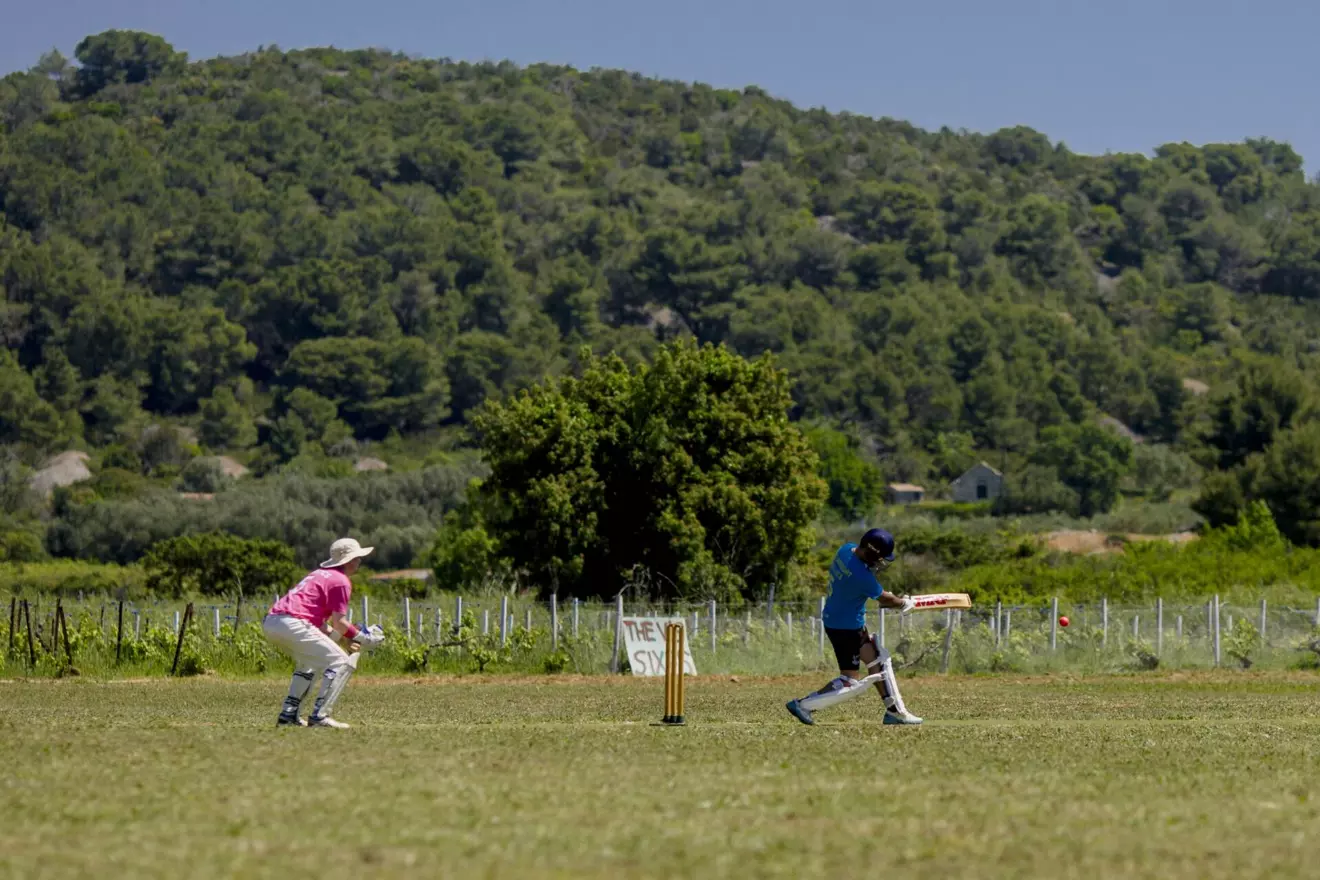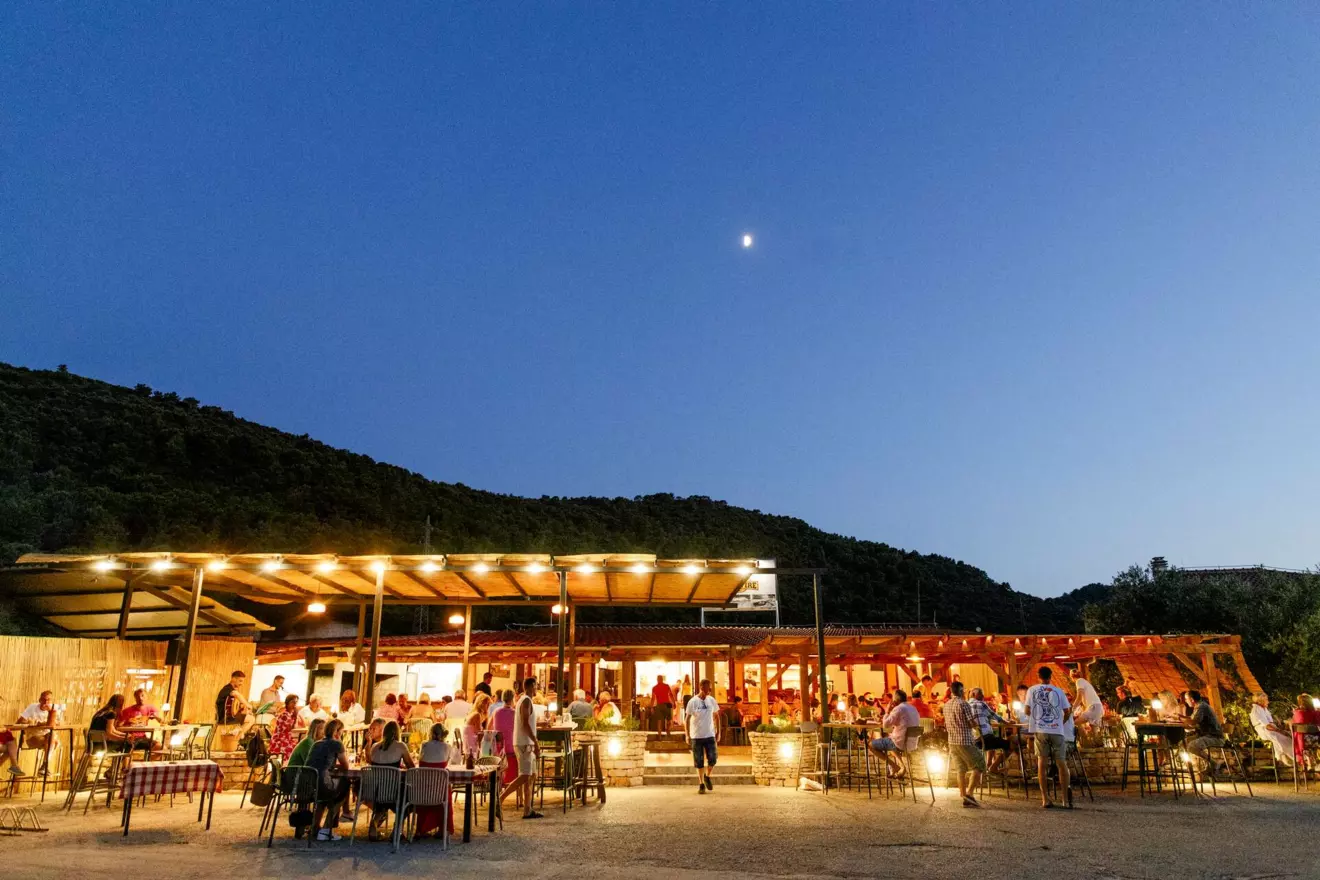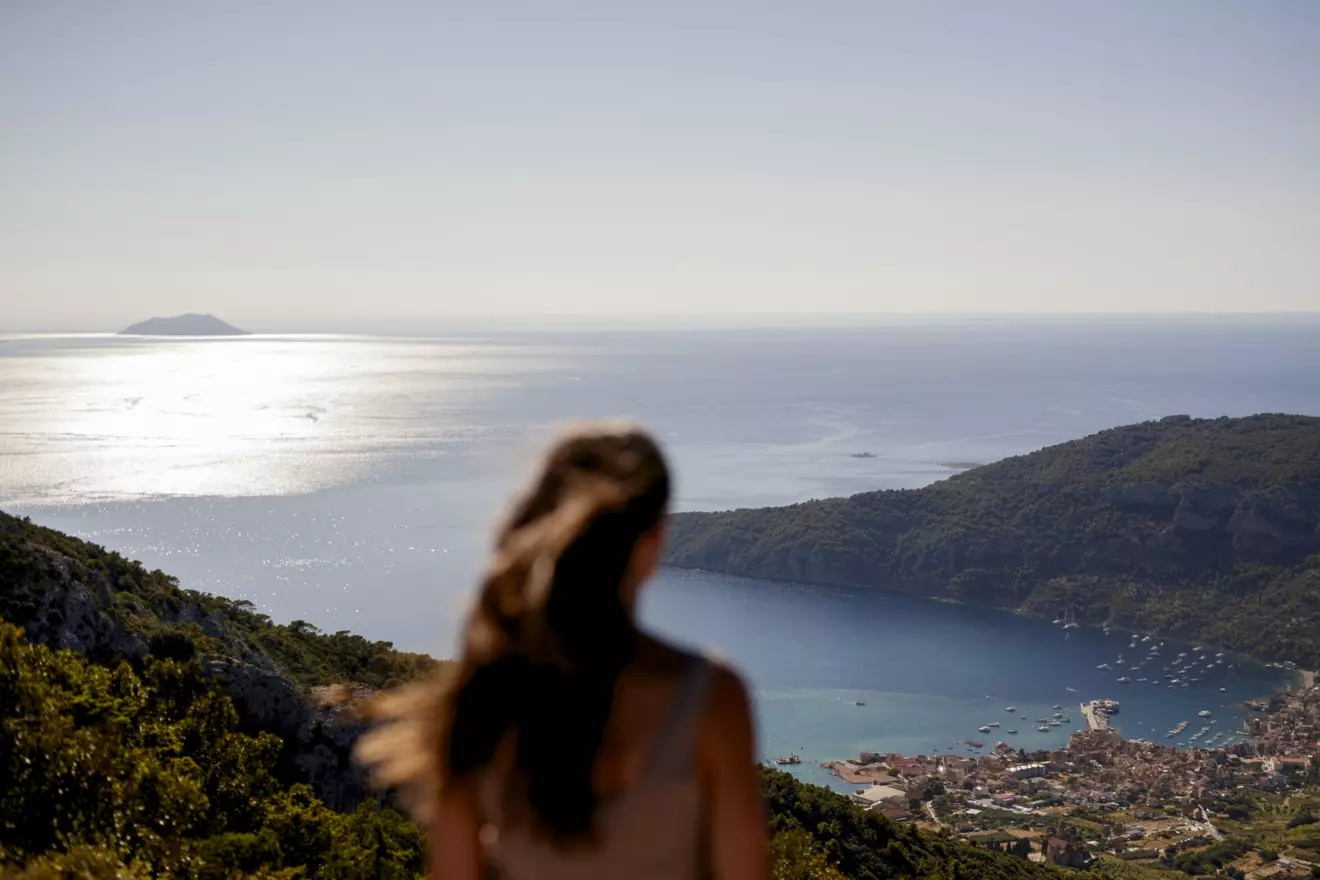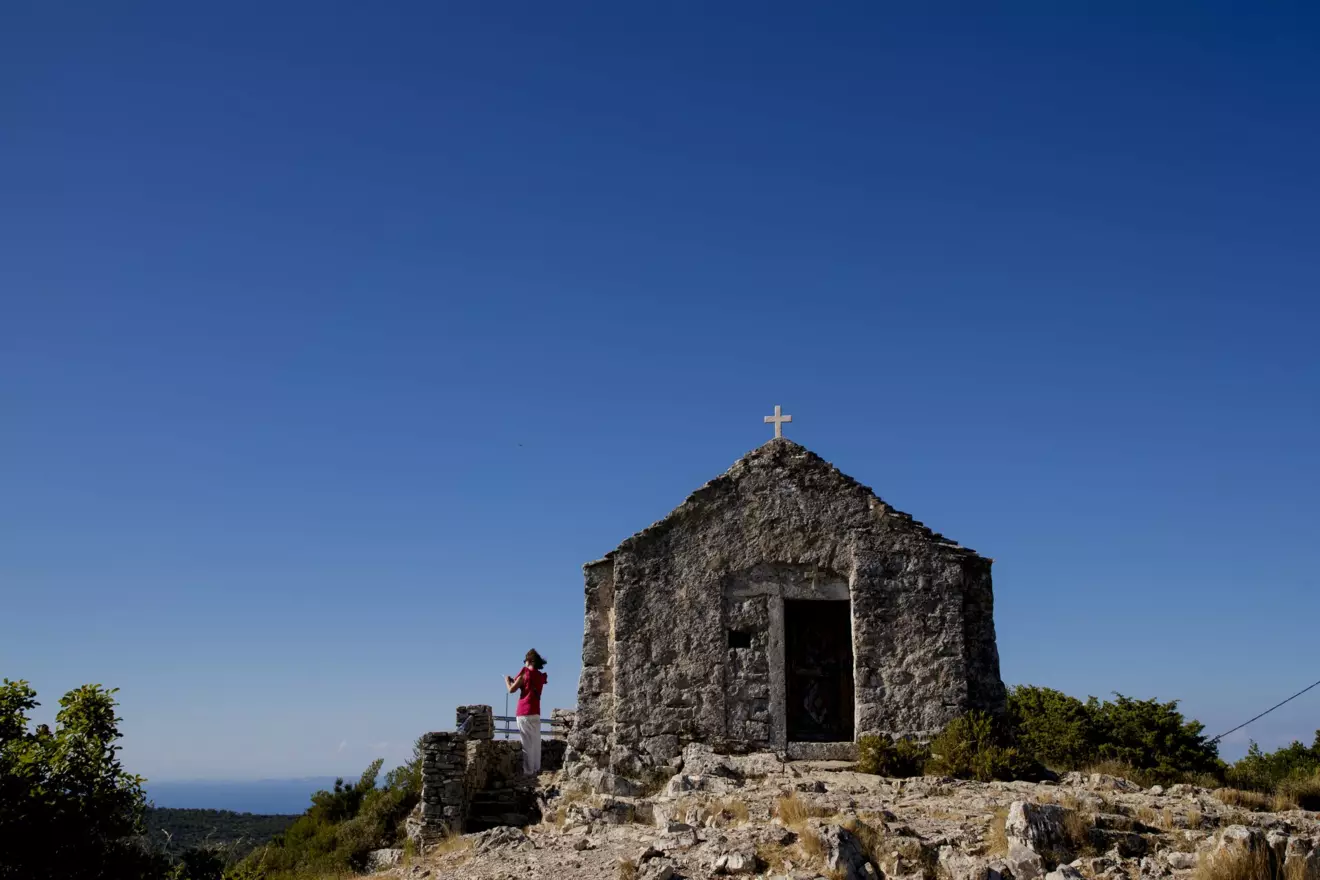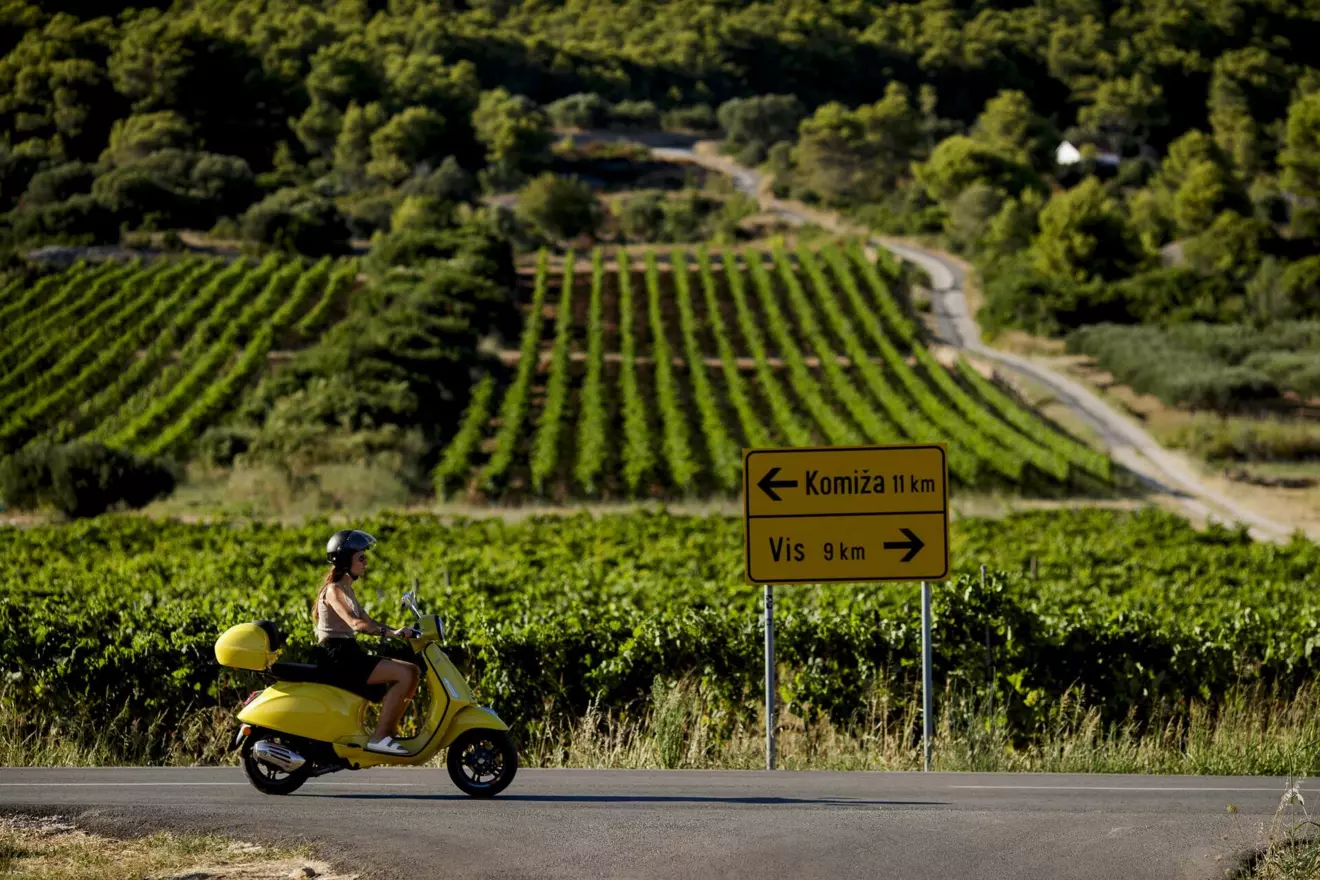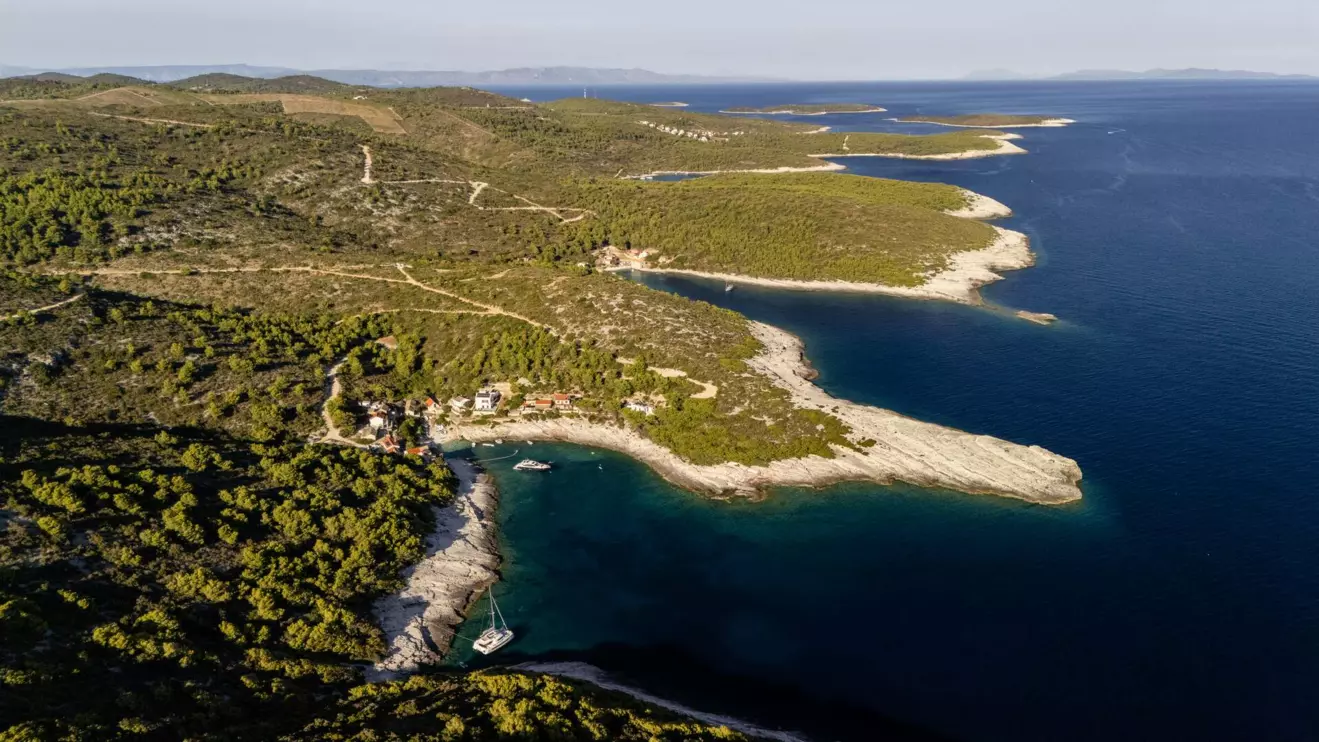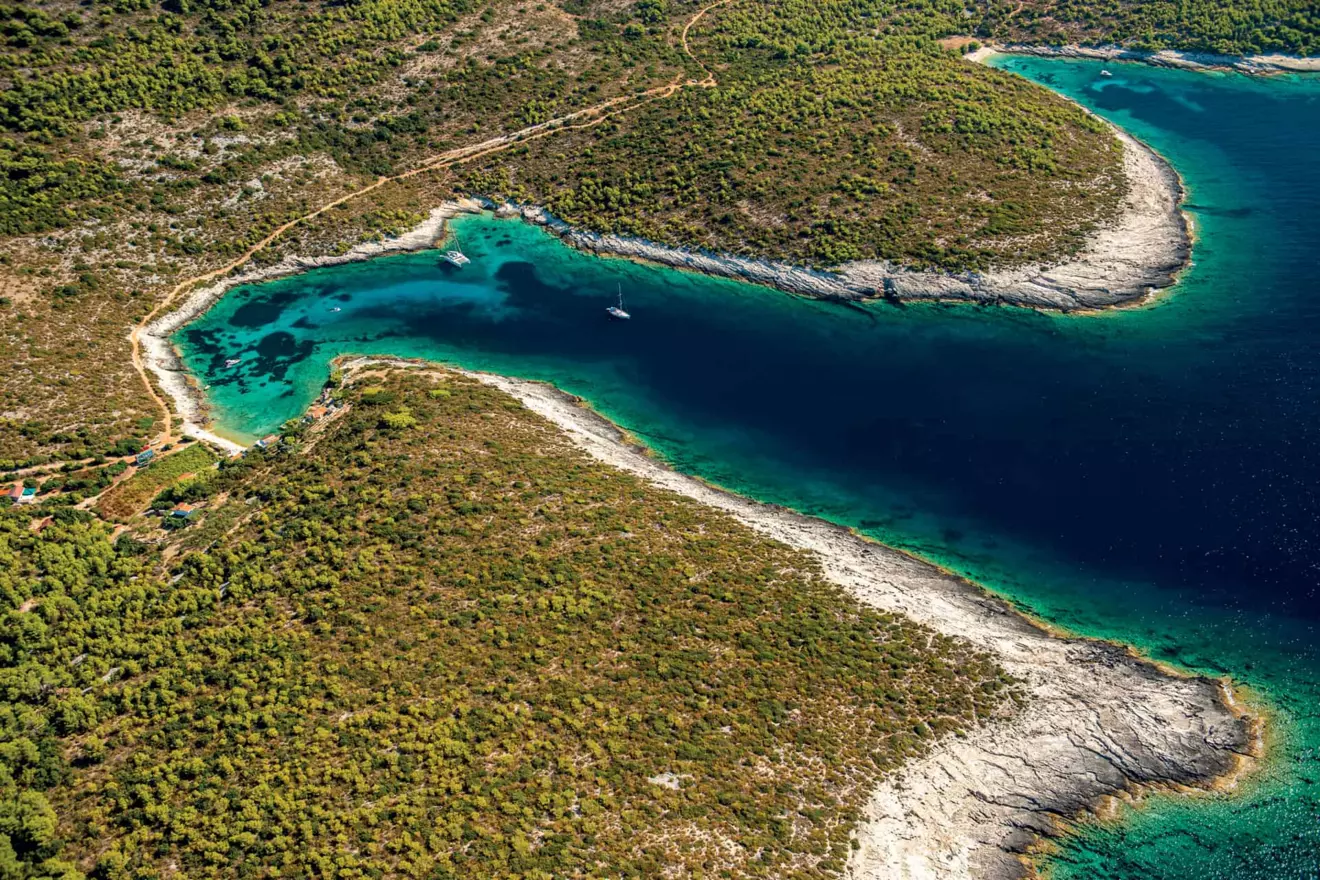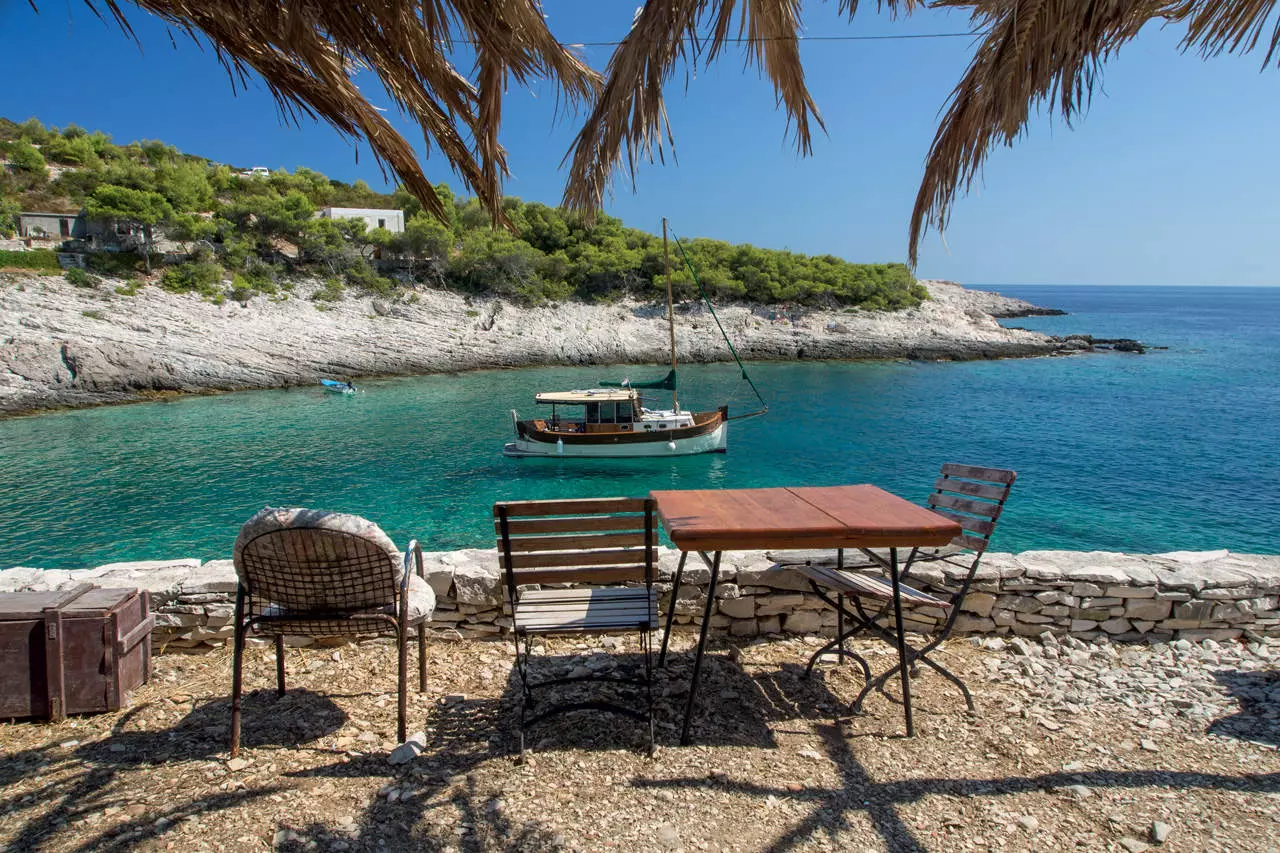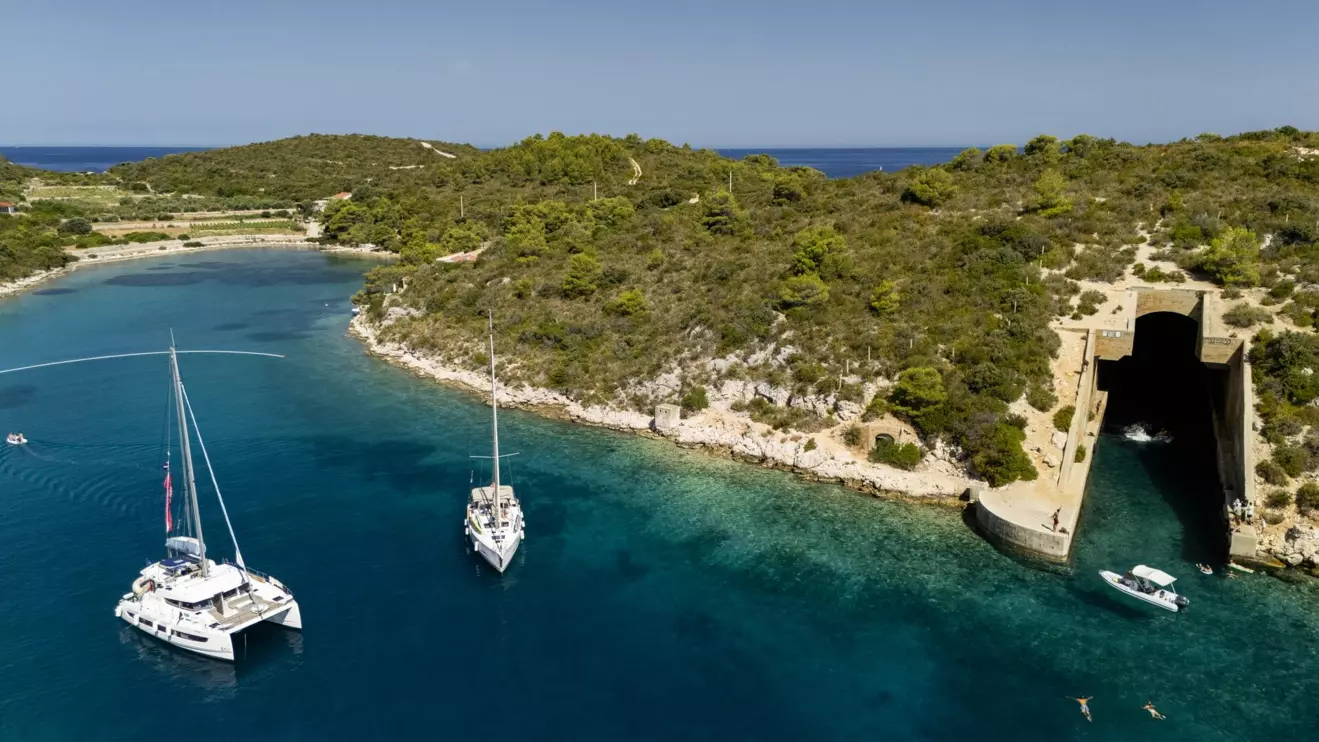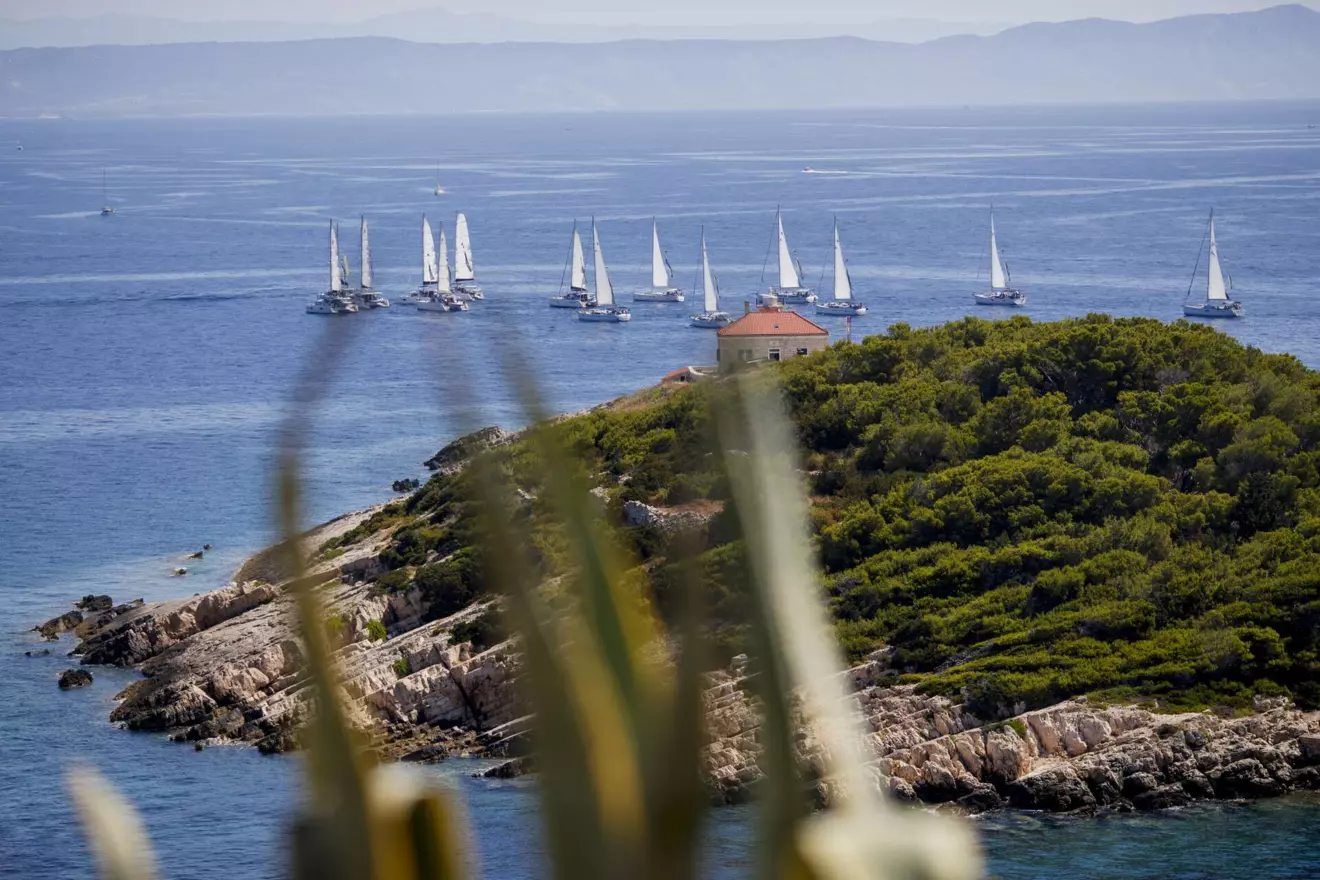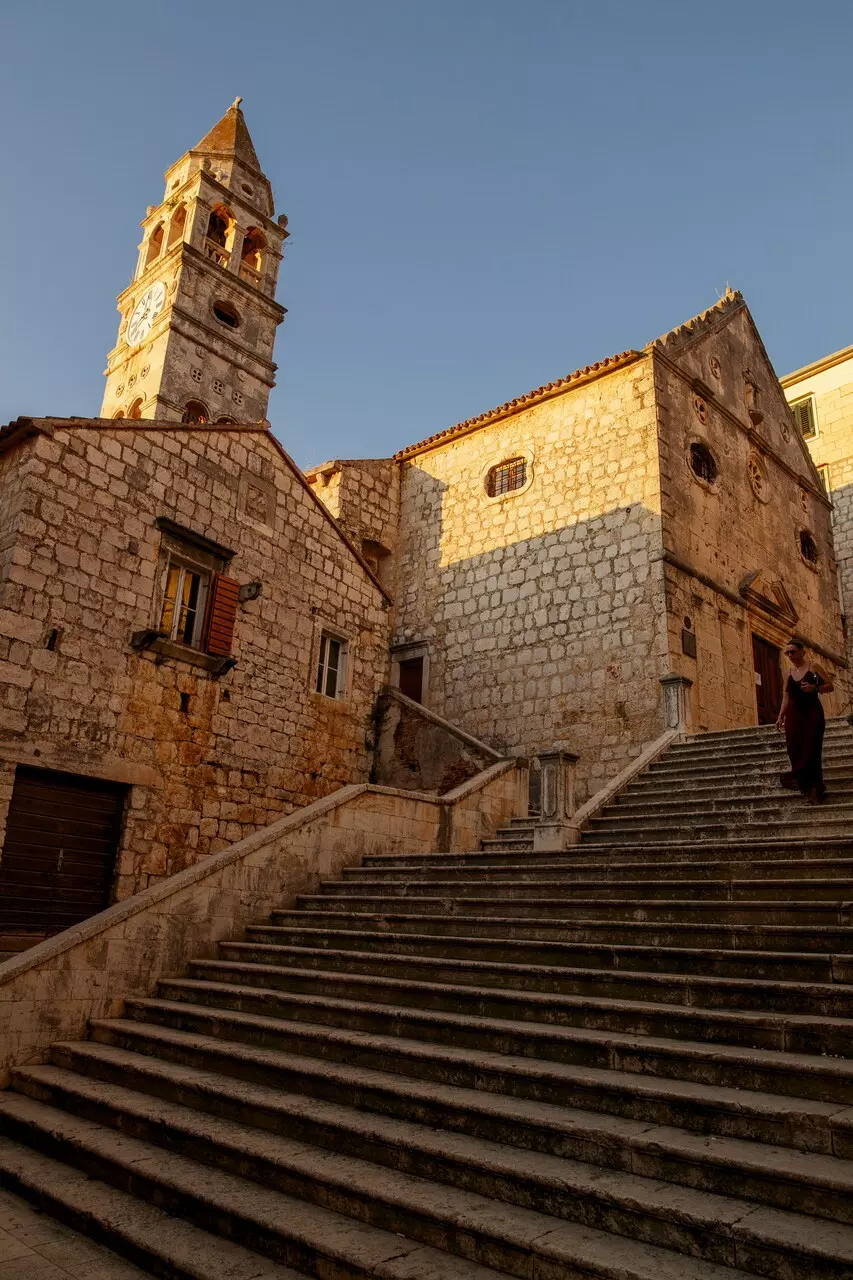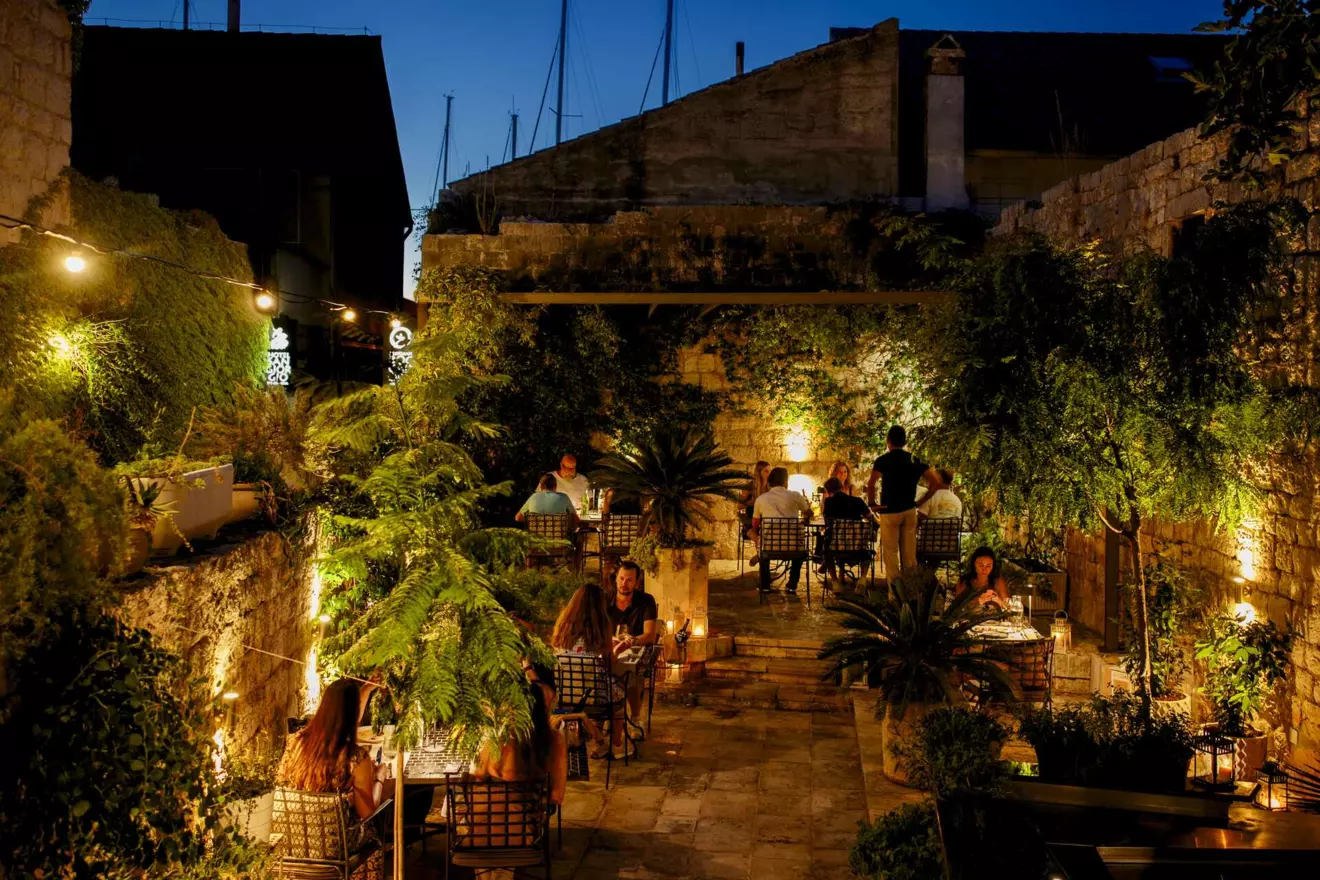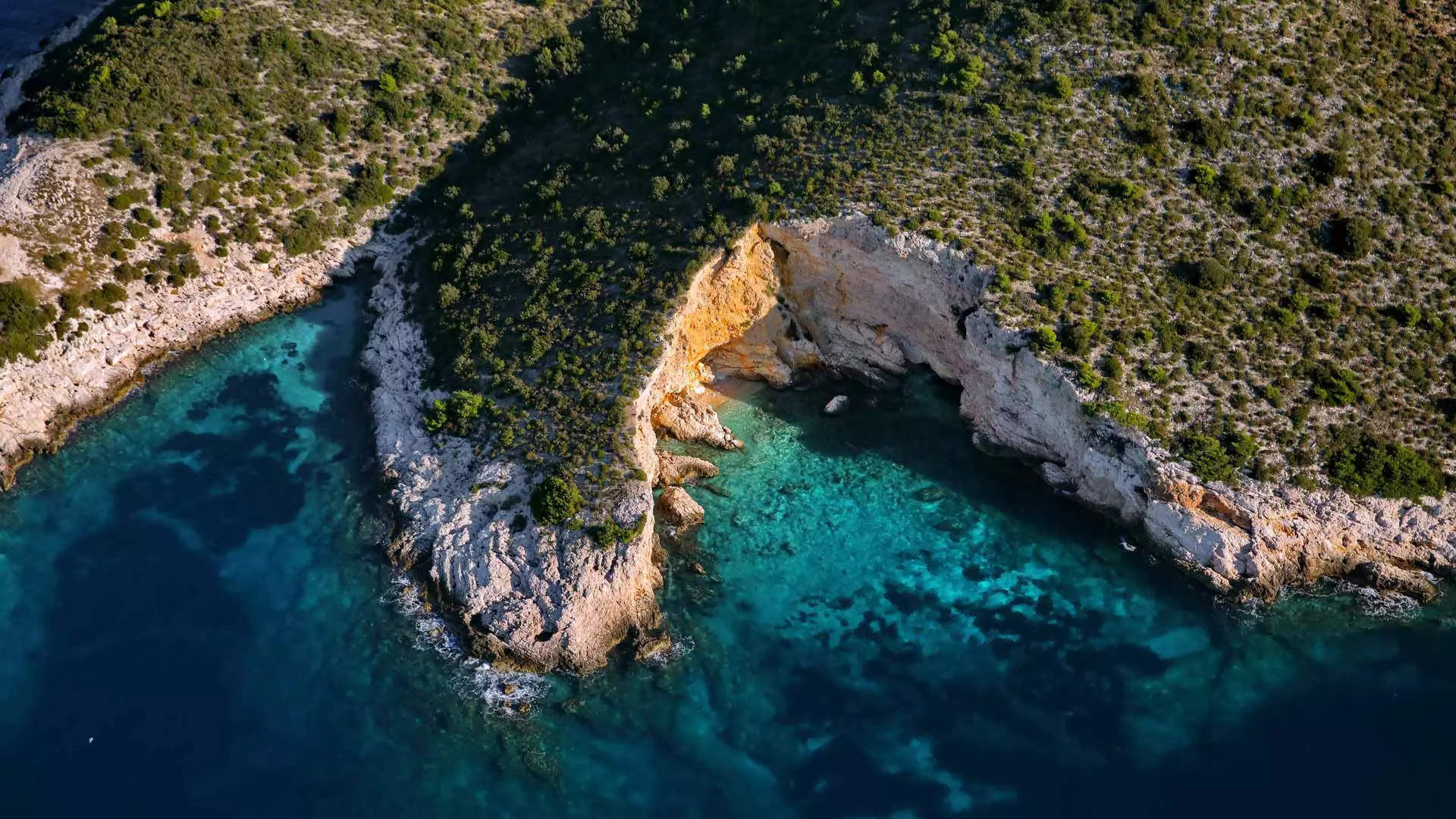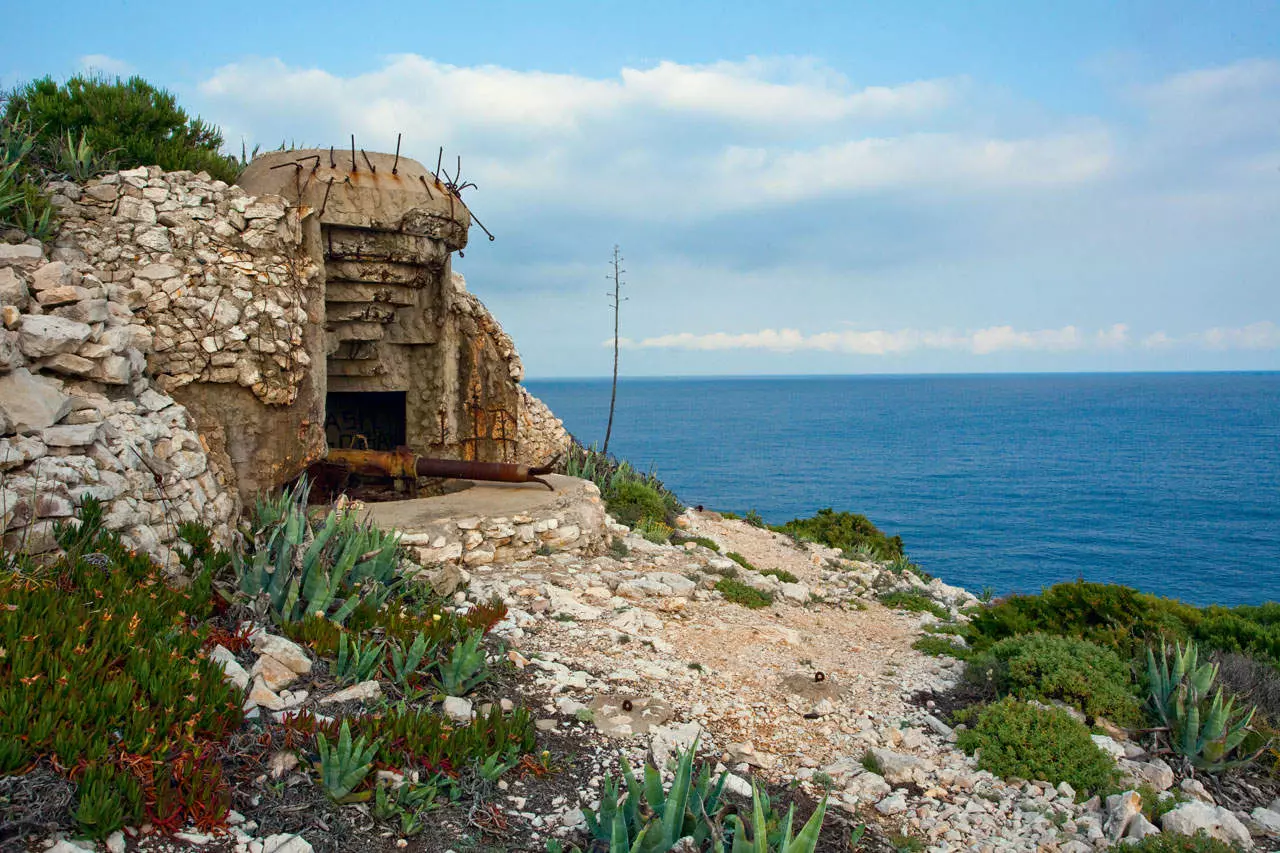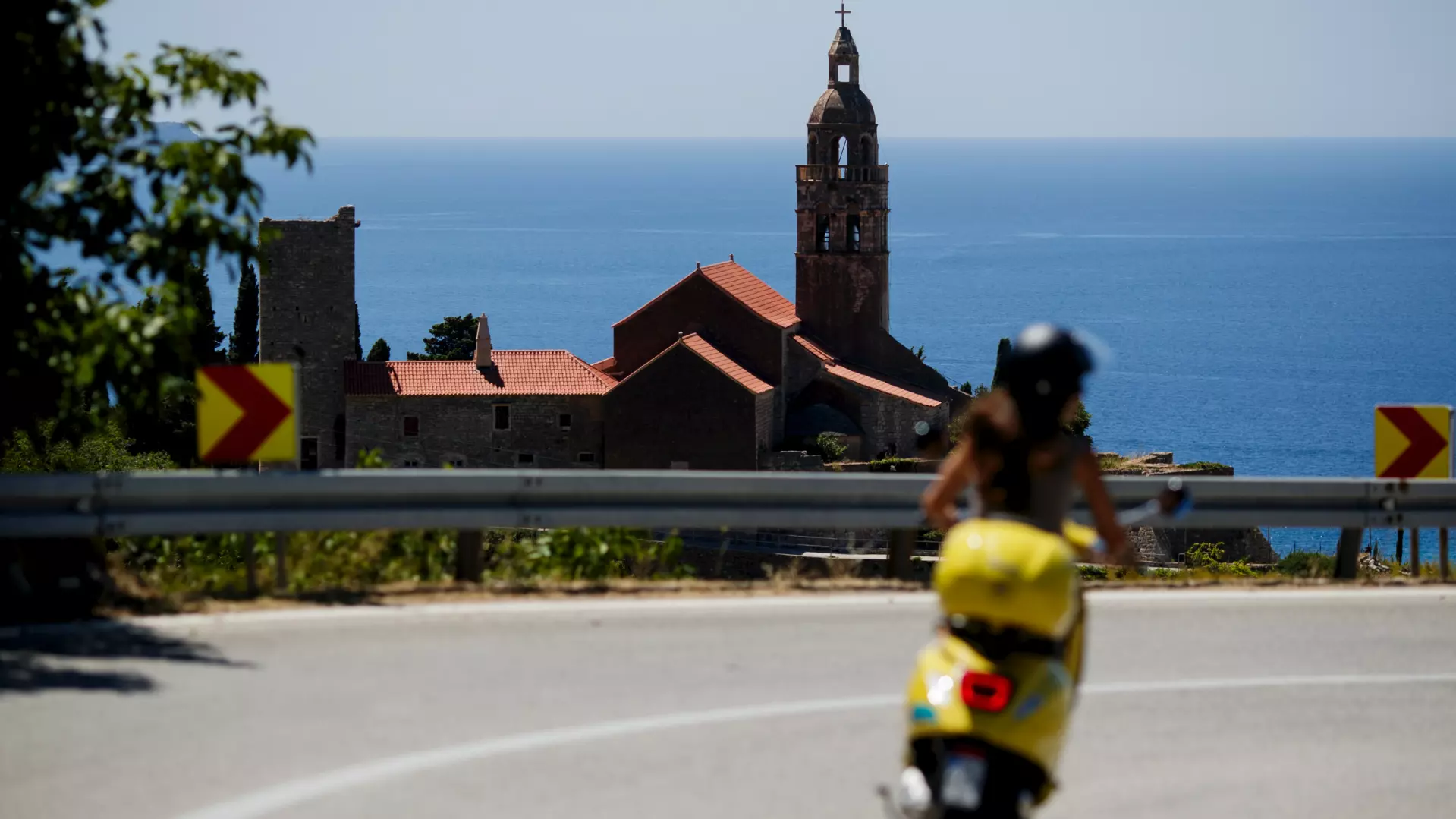
Vis on a Vespa: A Story with a Taste of Salt
They say Vis is stubborn. And maybe that’s why I love it.An island that doesn’t give itself to just anyone, that opens slowly, through the capillaries of its paths, scents, and views.
For the past fifteen years, I’ve returned to it in all seasons — sometimes with joy, sometimes with nostalgia, always with that quiet feeling of coming home. I’ve celebrated birthdays here, waited out storms, sailed the Komiža regatta, and spent winters when the sea turns into music because everything else goes silent.
This time, I’ve decided to show you my Vis. And on a Vespa — because it’s the perfect pace. Not too fast, not too slow — well, on a steep incline it might want to go faster, but it won’t. It’s stubborn, just like Vis.
Komiža, Always Home
We begin in Komiža, because it’s always been my base — the stone home of the Falkuša, of fishermen and quirky island souls. This place hasn’t lost its soul. Morning coffee on the promenade, usually at Speed or Keko.
Boats bob gently in the harbor while children run carefree, and mothers exchange gossip with neighbors. Island cats seek shade under benches, dogs wander freely, blending into the scenery.
The fishing boats still return at dusk, old men comment on grocery prices, and everyone greets each other — because everyone knows everyone. In summer, yes, it’s crowded, but your waiter will still find time to nod, even if you’re just passing through, and remind you that they know your name — and how you take your coffee.
Over the years, Komiža has stayed much the same — and that’s part of its charm. But some things do change. If you want to experience the real local rhythm, I’ll take you to the new dog-friendly beach just before Kamenica — a 15-minute walk from the Komiža waterfront, or a 3-minute Vespa ride if, like me, it’s just too hot to walk.
There, we can sip a good craft beer, listen to great music, and cool off together with our pets. It’s the kind of place where the sea keeps time, and people greet you like an old friend. A bit like Vis’s own Cheers.
The Scent of Macchia
If you’re an early riser and like to stay active on holiday, morning is the best time for a hike to Barjoška Bay — about an hour and a half, depending on how often you stop to smell the flowers. Barjoška was featured in Mamma Mia, but thankfully — like much of Vis — it’s not easily accessible, so it’s never too crowded. There’s a dirt road too, but I wouldn’t recommend it unless you’ve got an “island car.” The hike can be circular if you head out via Dragodid and return by the sea. It winds through macchia that in summer smells like a luxury candle, occasionally revealing traces of the island’s military past. One of the many abandoned Yugoslav army buildings waits silently — something that could’ve been turned into a luxury villa, but thankfully hasn’t. Instead, you can take a step into history and let your thoughts drift to another time.
The trail passes above several stunning coves before Barjoška, like Perna, and many will tell you they’re boat-only. They’re wrong. Vis is best discovered on foot — only then will it reward you the way only it knows how.
After cooling off, just a few minutes away you’ll find some of the island’s many overgrown bunkers — quiet reminders of the days when Vis guarded a whole country from intruders.
Sometimes I spend a whole day here. But not today — we move on.
Pritiščina: A Lesson in Patience
Don’t think Vis ends with Komiža. We fire up the Vespa and set off. If you’re rushing to catch a ferry, there’s the main road — the island’s lifeline — straight to Vis town. But on a Vespa, if you want to feel the island, you take the slow southern route, where every kilometer reveals a new view. It’s perfect for a leisurely cruise — and you never know what you’ll run into. This time, it was a herd of goats. Yes, actual goats walking in perfect formation along the road, their owners trailing behind in a car, making sure none strayed. In all my years on Vis, I’d never seen that. A moment for the memory bank — and maybe the cover shot.
After passing the goats, the road winds through Podhumlje, Podšpilje, and Plisko Polje, then loops back to the north side of the island and the town of Vis. Every few kilometers, you can detour toward one of Vis’s famous coves: Pritiščina, Smričevica, Stiniva, Srebrena, Tepluš, Zaglav, Milna, Smokova, and Stončica, before returning to Vis again. There are secret spots I won’t name — because then they wouldn’t be secrets. If you find them, you’ve earned them.
My favorite? The very first — Pritiščina. A beach that not everyone can conquer. The dirt road is long and stubborn, and I had the bright idea to take the old Vespa down. A bold plan, to say the least. I feared she might choke on the way back up, and truth be told, I wasn’t feeling too confident about going down either.
We ended up walking, until a kind local — one of only four residents in the bay — picked us up. He told us he only shops once a week and doesn’t miss a thing. Tourists, he says, always try to drive down, tear up the parking lot, and get stuck — which amuses him more than it annoys. Those who don’t respect nature never last long.
But we stayed.
The moment you reach Pritiščina, you realize it was worth every step. The bay greets you humbly, with turquoise water that shimmers like glass. The real gem is behind the rocks — a smaller cove, carved between cliffs, so quiet you can hear your thoughts.
In peak season, you might spot a few excursion boats. But if you’re patient, you’ll catch those priceless in-between moments. September and October are the best — when the sea is all yours and the sun’s edge begins to soften.
When Food Tells a Story
After a swim, my favorite thing is to sit down at Konoba Gušti Poja in Podšpilje — a place where you truly taste island cooking. No fast menus or instant experiences — just food prepared the way it’s been made for generations, in tune with the sea and the season.
The house wine flows naturally with each dish, like a continuation of the conversation. And though it never feels touristy, the best part is they’re open nearly all year — I’ve even had private lunches here. That’s a special kind of pleasure. They’ll share a story, offer you a rogačica or a glass of Vugava, and the food tastes like it was made just for you.
Eating well on Vis is a given — don’t miss Pojoda in Kut either, open year-round with the kind of warmth that’s become rare.Aerodrom mixes modern and authentic, serving just a few dishes each day, but every one a flavor bomb.
They have their own collection of photos from when this place was literally an airstrip. Sometimes, due to the heat, they take Saturdays off — so you might find the door closed. But trust me, it’s worth returning.
Just behind it, you’ll find a cricket field — to me, the very symbol of Plisko Polje — where every now and then, someone actually plays.
Roki’s, once Aerodrom’s neighbor, has moved to Dol but their peka still lives up to the name.
A View of History — and the Horizon
With a full belly, I’m skipping the usual walk and heading to Hum — the island’s highest point at 587 meters. The road winds upward, and halfway there you can detour to Tito’s Cave. On a 50cc motorbike, it’s a special experience — especially with two riders — where your top speed rivals that of a brisk walk. But you don’t mind, because this is Vis, and you’re in no hurry.
I park the Vespa where a dusty stone path and a flight of steps lead to a cool cave that, in the summer of 1944, sheltered the Yugoslav leadership and Tito himself. Today, it holds stories of struggle and hope. The trail is short, but hot and dusty — giving you a sense of why Tito chose this spot: hidden in stone, away from bombs and eyes. When you stand at the entrance and let the silence sink in, you understand why people still come, respectfully, though the war is long over. The view stretches out to the sea — and the sea, as always, quietly carries what can’t be forgotten.
You can also reach the cave from a hiking trail up top — a worthy detour for those who’ve never been.
After that look into the past, we keep climbing. Along the way, we pass military jeep tours for whom this is a must-see stop. At the top stands the tiny chapel of St. Spirit, and on a clear winter day, you can see all the way to Italy. I stood there the other day and realized: this is my favorite view in the world.
Off-season, I love hiking the trail from Vis to Komiža — Hum is the final stop before a steep descent into town. The trail winds through fields, olive groves, dry-stone walls, abandoned villages and those with just a few residents. You literally pass through someone’s backyard where laundry flaps in the wind and cats nap under old cars. A chicken strolls by, a dog barks — otherwise, silence. No cafés, no souvenir stands — just stone, grass, and sea views on both sides. This trail is a portal into the true heart of Vis.
Beaches As They Really Are
After all that sea-gazing, you’ll want to swim. I hop back on the Vespa and keep going. Off-season, I often detour to Marine Zemlje, then follow the steep goat path down to Stiniva — one of the Adriatic’s most photographed coves in recent years. Unfortunately, in summer, it’s beautiful only in pictures. Reality doesn’t match Instagram. But visit in May, and it’s magical. Just don’t go down in flip-flops. Seriously.
In July and August, I prefer the ride — the smell of salt, wind in my hair — and only turn off for Stončica. Also a famous sandy bay, loved by families and sailors alike, but I come for something else. At the end of the road, I leave the Vespa. The rest is on foot. After a short 15–20 minute walk, the view opens up to the Stončica lighthouse. It’s not open to everyone, but luckily I’ve known Ićo, one of the two lighthouse keepers, for years.
The Lighthouse, the Man, and the Sea
Ićo is a true sea wolf, an artist, and a brilliant cook, with a life rhythm you can’t buy.
The first time we visited, he welcomed us with a smile and a pot of grilled piceje — a wild herb growing around the lighthouse. Years later, I read in a gourmet magazine that top chefs now use that same herb. But we were picking it off the rocks while he told us stories of how the sea can be both cruel and beautiful — in the same breath.
If you’re not on Ićo’s guest list, there’s always Mala Travna earlier on our route — where another island character, Senko Karuza, runs a konoba unlike any other. No menu, no pretense — just whatever the sea provides. Anyone who knows Vis will tell you — this is the soul of slow food. Take your time. Swim between courses. Enjoy. Senko cooks with heart, in the rhythm of the sea and the seasons — and each plate tastes like a moment. One you may never experience the same way again. That’s the real luxury of Vis — the unrepeatable. That moment when food, landscape, and the scent of salt create a symphony you can’t take with you. Which is why you keep coming back.
The Silence of Concrete — and Fort George
Before our last stop, we ride through the port, wave goodbye to Vis, and head toward the old submarine base. Once a shelter for Yugoslav Navy submarines, its damp concrete tunnels still drip from the ceiling and lead you into another world. The silence here gets into your bones — a silence no luxury can replace. Well… almost.
Fort George comes close. I always save it for sunset. Built by the British in 1813 when they held a military base on Vis, it was designed to guard Adriatic access. Strategically perched on Cape St. George, its walls once held off Napoleonic attacks and pirate raids. Yes, it’s a bit cliché. And yes, we’ve all seen those wedding photos from Fortica. But there’s a reason. And no, you don’t need to get married there. You can, like us, sip sparkling wine and plan your next return. Because in that moment, you’re sure you’ll be back.
After a full day, I return to Kut. And though Komiža is my “home,” Kut holds a special place in my heart. Narrow stone alleyways where I love getting lost all over again — a quiet refuge that never fails to charm me. This time, without planning it, we stumbled into the courtyard of Boccadoro — a restaurant hidden in the ruins of an old stone house.
A mystical little oasis, especially rare in peak season. Sheltered from view and heat, we raise a glass of local wine and I realize: this is why I always return. Not just for the sea, the pine scent, or the cicadas — but for moments like this.
When you lose all sense of time, and everything makes sense. That’s why Vis never feels like a vacation. It’s more like a different reality — where things move at their own pace, and the most important thing… is to know when to stop. And raise a toast.
Text Željka Malinova
Photo & Video Domagoj Blažević



